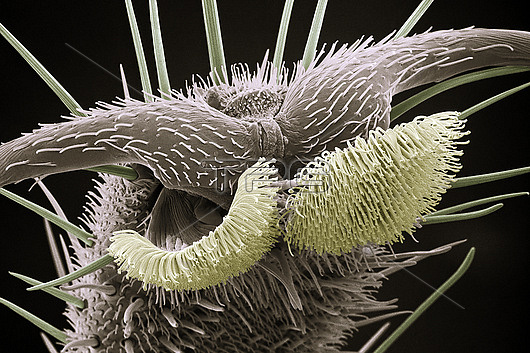
Scanning electron micrograph of the foot of a house fly, Musca domestica, seen from below. The picture shows, above centre, the base of two claws, and below, two brush-like pads, the pulvilli (yellow). Each pulvillus is covered with hundreds of fine hairs, the setae. The setae are flexible and hollow; they enable the insect to attach itself to a wide range of surfaces, including those which appear completely smooth, such as glass. The setae secrete an adhesive fluid that contains a mixture of proteins, polysaccharides and lipids. This glue allows the insect to walk on vertical smooth surfaces, or even, upside down. The adhesion is sufficient to support the weight of the fly, but is easily released by twisting or pulling, with the assistance of the two muscular claws. The combination of strong adhesion and easy release is of research interest in the field of robotics. Mag x 380 at 10x8
| px | px | dpi | = | cm | x | cm | = | MB |
Details
Creative#:
TOP26387018
Source:
達志影像
Authorization Type:
RM
Release Information:
須由TPG 完整授權
Model Release:
N/A
Property Release:
N/A
Right to Privacy:
No
Same folder images:

 Loading
Loading